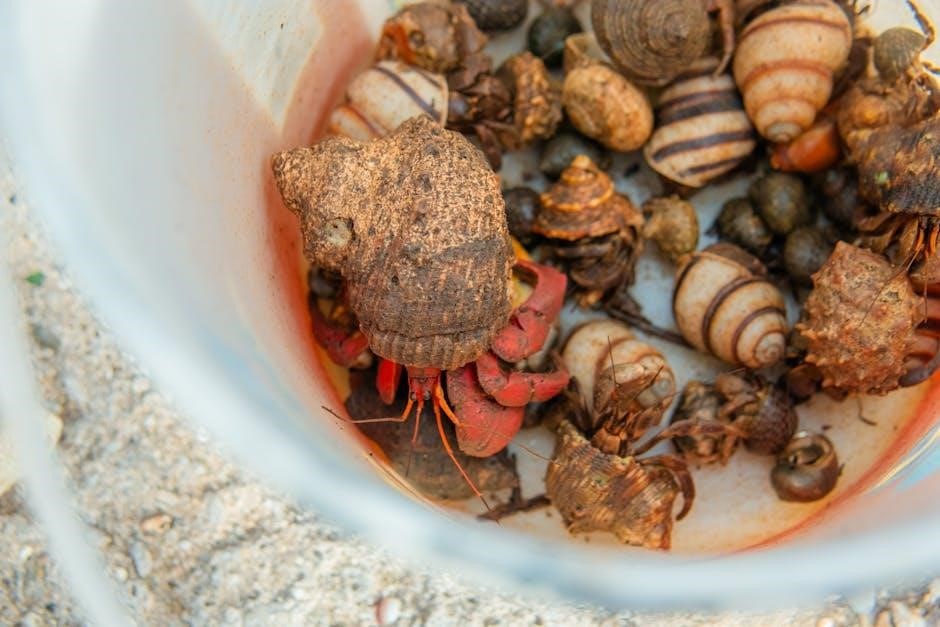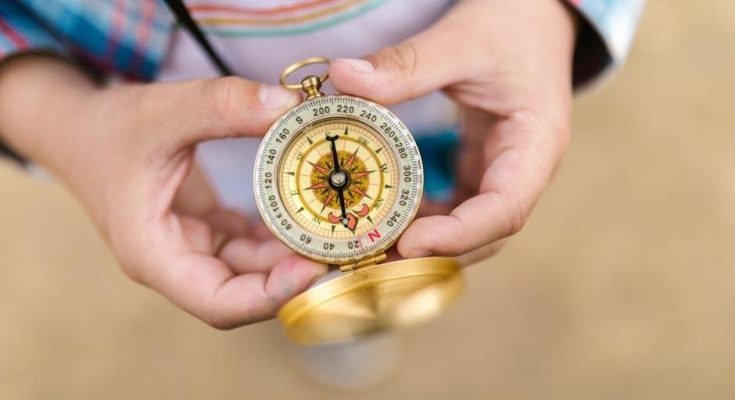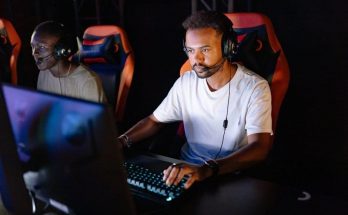Leveling a Paladin Tank requires a strategic approach to master its unique abilities and playstyle. This guide provides insights into building a strong foundation, understanding key strengths, and optimizing your tanking effectiveness from early levels through endgame content. Learn how to leverage your abilities, manage resources, and enhance your group’s survivability while progressing through the game.
1.1 Overview of the Paladin Tank Class
The Paladin Tank, or Protection Paladin, is a versatile and durable class specializing in absorbing damage and protecting allies. Known for their strong active mitigation, defensive cooldowns, and unique group utility, Paladins excel in both solo and group content. With a focus on Holy Power management and access to powerful abilities like Shield of the Righteous and Sentinel, they provide consistent survivability while bringing value to their team through blessings, auras, and crowd control. This makes them a reliable choice for tanking in various WoW content.
1.2 Importance of Leveling as a Tank Paladin
Leveling as a Tank Paladin is crucial for mastering defensive mechanics, cooldown management, and Holy Power generation. Early investment in key talents like Shield of the Righteous and Sentinel provides a strong foundation for survivability. Proper leveling ensures you can effectively protect groups, handle diverse enemies, and maintain consistent threat generation. It also allows you to refine your ability rotation, resource management, and damage intake, making you a reliable tank for both leveling and endgame content.

Key Characteristics of a Paladin Tank
Paladin Tanks excel through divine abilities, defensive cooldowns, and Holy Power management, offering strong survivability and group utility in both leveling and endgame content. They provide unique buffs and auras to enhance party performance while excelling at mitigating predictable damage through active mitigation. This makes them versatile and reliable tanks for various playstyles and group compositions. Their ability to adapt to situations ensures consistent effectiveness in both solo and group settings.
2.1 Strengths of the Protection Paladin
Protection Paladins excel with strong active mitigation tools like Shield of the Righteous and defensive cooldowns such as Sentinel, providing excellent control over predictable damage. Their unique ability to heal and protect through Holy Power makes them highly versatile. Additionally, Paladins offer exceptional group utility, including blessings and auras, enhancing party survivability. Their adaptability in both solo and group settings ensures consistent effectiveness, making them a reliable choice for tanking in various content types.
2.2 Weaknesses of the Protection Paladin
Protection Paladins face challenges with unpredictable burst damage, as their mitigation relies on foresight. They lack mobility compared to other tank classes, making positioning crucial. Additionally, their rotation can feel rigid, requiring careful management of Holy Power. While their healing capabilities are strong, they may struggle in prolonged fights without cooldowns. Balancing survivability with resource management is key, as inefficient use of abilities can lead to vulnerability in intense scenarios.
2.3 Unique Abilities and Playstyle
Protection Paladins excel with abilities like Holy Shield and Shield of the Righteous, providing consistent damage reduction. Their playstyle revolves around proactive defense, managing Holy Power to sustain survivability. Paladins also bring unique utility through auras and blessings, enhancing group performance. The rotation emphasizes a balance of offensive and defensive actions, creating a methodical yet dynamic tanking experience. This blend of mobility, damage mitigation, and support makes Protection Paladins versatile and valuable in both solo and group content.

Leveling Process for Paladin Tanks
Paladin tank leveling focuses on mastering survivability, optimizing ability rotations, and progressively enhancing defensive capabilities to ensure efficiency and effectiveness in both solo and group content environments.
3.1 Early Levels (1-20): Building the Foundation
During levels 1-20, focus on mastering basic tanking mechanics and essential abilities. Start with Shield of the Righteous and Judgment to establish a foundational rotation. Prioritize survivability by equipping sturdy armor and learning to manage Holy Power effectively. Questing efficiently ensures steady XP gain. Practice pulling multiple enemies to develop grouping skills. Early on, focus on defensive cooldowns like Shield of the Righteous and Hand of Protection to protect yourself and allies. These levels set the groundwork for advanced tanking strategies later on;
3.2 Mid Levels (21-50): Enhancing Survivability
Between levels 21-50, focus on improving survivability through key abilities like Shield of the Righteous and Hammer of the Righteous. Invest in stats like stamina and strength to boost your defensive capabilities. Use Holy Shield and Cleanse to manage debuffs and maintain control. Balance gear upgrades with ability upgrades to ensure consistent threat generation. Practice using Shield Block and Shield Bash to refine your defensive cooldown rotation. This phase solidifies your tanking foundation for higher-level challenges.
3.3 Late Levels (51-70): Mastery and Optimization
At levels 51-70, focus on mastering advanced abilities like Lay on Hands and Avenging Wrath to enhance survivability and threat generation. Prioritize stamina and attack power to optimize your tanking effectiveness. Refine your rotation by perfecting the use of Shield Block and Holy Shield for consistent damage mitigation. Experiment with high-level gear and stats like block value to prepare for endgame content. This phase emphasizes polishing your skills and maximizing efficiency for challenging encounters.
Talent Selection and Progression
Talents are crucial for shaping your Paladin’s role. Focus on survivability, threat generation, and support. Allocate points to enhance your tanking effectiveness while maintaining group utility through blessings and auras.
4.1 Essential Talents for Leveling
Focus on talents that enhance survivability, threat generation, and Holy Power management. Shield of the Righteous and Hammer of the Righteous are foundational for tanking. Redoubt increases block chance, while Touched by the Light converts stamina to spell power. Holy Wrath provides both damage and healing, boosting versatility. These talents ensure you can maintain aggro, mitigate damage, and support your group effectively during the leveling process.
4.2 Talent Builds for Different Playstyles
Adapt your talent choices to suit your playstyle. For survivability, focus on Redoubt and Divine Fortress. If you prefer dealing damage, prioritize Zealotry and Righteous Cause. For a support-oriented tank, Beckon of Light and Holy Wrath enhance group utility. Mix these talents to balance defense, offense, and support, ensuring a versatile and effective tanking experience tailored to your preferred playstyle and leveling challenges.
4.3 Talent Progression Timeline
Plan your talent progression strategically as you level. At level 10, choose Redoubt for improved block chance. By level 15, select Divine Fortress to boost armor. At level 20, take Guarded by the Light for damage reduction and healing. At level 30, opt for Swallowing Darkness for spell reflection. By level 40, pick Holy Wrath for increased damage and cooldowns. At level 50, take Zealotry for attack speed. Finally, at level 60, choose The Art of War for crit enhancement, ensuring a well-rounded tank by endgame.

Core Abilities and Rotations
Master essential abilities like Judgement, Shield of the Righteous, and Consecration to generate Holy Power and activate defensive cooldowns like Ardent Defender and Guardian of Ancient Kings.
5.1 Primary Tanking Abilities
Paladin tanks rely on abilities like Judgement, Shield of the Righteous, and Consecration to generate Holy Power and maintain threat. Judgement deals damage and heals, while Shield of the Righteous provides a damage-absorbing shield. Consecration creates a damage zone, enhancing AoE control. Defensive cooldowns like Ardent Defender and Guardian of Ancient Kings are crucial for survivability. These abilities synergize to provide both offensive and defensive capabilities, making Paladins versatile tanks.
5.2 Ability Prioritization and Rotation
Paladin tanks focus on a rotation that balances damage and survivability. Start with Judgement to generate Holy Power, followed by Consecration for AoE threat. Use Shield of the Righteous to absorb damage and Hammer of the Righteous for single-target threat. Maintain Righteousness to enhance Consecration. Prioritize cooldowns like Ardent Defender during heavy damage phases. This rotation ensures consistent threat generation while managing defensive capabilities effectively, making Paladins reliable tanks in any scenario.
5.3 Managing Holy Power and Cooldowns
Managing Holy Power and cooldowns is critical for Paladin tanks to maintain survivability and threat. Use abilities like Judgement and Consecration to generate Holy Power, then spend it on defensive cooldowns like Word of Glory or Ardent Defender. Timing these abilities during heavy damage phases ensures optimal survivability. Additionally, Lay on Hands provides an emergency heal, while Divine Shield and Hand of Protection offer utility. Efficiently managing these resources enhances your tanking effectiveness and group support.

Stat Prioritization and Gear
Paladin tanks prioritize Stamina for survivability, Strength for block value, and Dodge/Parry for avoidance. Gear progression focuses on acquiring armor with these stats to enhance tanking effectiveness.
6.1 Stat Prioritization for Tank Paladins
For Paladin tanks, Stamina is the highest priority, as it directly increases survivability. Strength enhances block value and attack power, while Dodge and Parry improve avoidance. Mastery and Haste are secondary, boosting block chance and attack speed. Critical Strike and Versatility are less crucial during leveling. Prioritizing these stats ensures optimal survivability and threat generation, making the tanking experience smoother and more effective in both solo and group content.
6.2 Gear Progression During Leveling
Early levels (1-20) focus on quest rewards and vendor gear. Prioritize armor pieces with high stamina and strength. At mid levels (21-50), begin running dungeons for better gear drops, focusing on weapons and shields that boost defensive stats. Late levels (51-70) involve seeking epic items from dungeons or reputation vendors. Always upgrade armor and weapons to maintain high survivability and threat generation, ensuring a smooth transition into endgame content.
6.3 Importance of Armor and Equipment
Armor and equipment are crucial for a Paladin tank, as they directly impact survivability and threat generation. Plate armor provides superior protection, while weapons and shields enhance defensive stats. Prioritize gear with stamina, strength, and defense ratings to maintain high health and mitigation. Upgrading equipment regularly ensures you can handle increasing damage from enemies. Properly equipping your Paladin is essential for effectively tanking dungeons and quests, making armor and gear integral to successful leveling and progression.

Defensive Cooldowns and Mitigation
Defensive cooldowns and mitigation strategies are vital for Paladin tanks, enabling them to survive intense damage and maintain threat. These tools enhance survivability and control.
7.1 Key Defensive Cooldowns
Paladin tanks rely on powerful defensive cooldowns to survive heavy damage. Lay on Hands heals and resets threat, while Shield of the Righteous absorbs massive damage. Ardent Defender reduces damage below 20% health, and Guardian of Ancient Kings provides a temporary shield and damage reduction. These abilities are crucial for managing high-threat situations and preventing death, ensuring the tank remains stable and maintains control in critical moments.
7.2 Effective Use of Mitigation Techniques
Paladin tanks excel at mitigating damage through holy-based abilities and smart rotations. Shield of the Righteous absorbs incoming attacks, while Holy Shield provides block chance. Timing these abilities during high-damage phases maximizes survivability. Additionally, Consecration and Judgment help maintain threat and generate Holy Power for defensive cooldowns. Proper rotation and ability usage ensure consistent damage reduction, making the Paladin tank resilient and reliable in maintaining group safety and threat control during challenging encounters.
7.3 Managing Damage Intake
Effective damage intake management is crucial for Paladin tanks to maintain stability. Use Shield of the Righteous to absorb heavy hits and Holy Shield for consistent block chance. Coordinating cooldowns like Divine Protection and Arbiter of the Light during intense damage phases helps reduce stress on healers. Communicate with healers to ensure they can cover gaps in mitigation, while using lower-level abilities like Consecration and Judgment to generate Holy Power for defensive needs, ensuring sustained survivability.

Group Utility and Support
Paladin tanks provide exceptional group utility through powerful blessings, auras, and debuff cleansing. Their hybrid nature allows them to support allies with healing, buffs, and crowd control.
8.1 Blessings and Auras
Blessings and auras are core to a Paladin’s group utility. Blessings like Might and Kings enhance stats, boosting attack power and stamina, while auras such as Devotion and Concentration provide armor and spell interruption resistance. These abilities make Paladins invaluable in groups, ensuring allies perform better and stay protected, which is crucial during leveling when party survival is key.
8.2 Crowd Control and Utility Abilities
Paladins excel at crowd control and utility, with abilities like Hammer of Justice for stunning enemies and Turn Evil to fear undead. Repentance provides reliable CC, while Hand of Protection and Hand of Sacrifice protect allies. These tools are invaluable for managing adds and preventing damage, making Paladins versatile in both solo and group play. Proper use enhances efficiency and safety during leveling, ensuring smoother progression through challenging content.
8.3 Enhancing Group Survivability
Paladins significantly enhance group survivability through their supportive abilities. Auras like Devotion Aura provide resistance, while blessings such as Greater Blessing of Kings and Sanctuary boost stats and reduce damage. Additionally, Word of Glory and Light of the Martyr offer healing, and Aura Mastery enhances damage reduction. Using Divine Shield strategically protects the group during intense fights, making Paladins invaluable for maintaining party health and resilience during leveling and dungeons.

Leveling Tips and Tricks
Optimize your journey by focusing on efficient questing routes and ability rotations. Use your mount early and often to save time, and don’t hesitate to use defensive cooldowns in challenging areas. Stay mindful of yourHoly Power and health, ensuring you’re always prepared for unexpected threats. Regularly review your gear and talents to maintain peak performance.
- Stick to main story quests for consistent XP.
- Batch similar quests to minimize travel time.
- Use Divine Steed and Hearthstone wisely.
- Utilize Lay on Hands for emergency healing.
9.1 Optimizing Questing Efficiency
Streamline your leveling process by focusing on quest hubs and minimizing travel time. Complete quests in close proximity to reduce backtracking. Use your mount frequently and consider grouping similar quests together. Take advantage of your tank capabilities to handle multiple enemies at once, speeding up mob kills. Prioritize main story quests for consistent XP and avoid distractions like unnecessary side quests. Efficient questing ensures steady progression and keeps your momentum strong throughout the leveling journey.
9.2 Managing Resources and Health
Efficiently manage your health and mana to maintain consistent tanking performance. Use cooldowns like Lay on Hands or Divine Shield to reduce damage spikes. Keep an eye on mana consumption, as it fuels essential spells and Holy Power generation. Balance Holy Power usage for Shield of the Righteous and other defensive abilities. Utilize passive healing from talents like Word of Glory to minimize downtime. Prioritize health management to avoid unnecessary deaths and maintain group progress during quests and dungeons.
9.3 Avoiding Common Mistakes
Steer clear of common errors that hinder effective tanking. Avoid overextending during combat, as it can lead to unnecessary damage. Don’t neglect cooldowns like Shield of the Righteous and Divine Shield, as they are crucial for survival. Poor mana management can disrupt ability usage, so monitor it closely. Incorrect positioning can reduce threat generation and increase damage taken. Lastly, avoid ignoring group utility, as blessings and auras significantly enhance team performance and survivability.

Comparison with Other Tank Classes
Paladin tanks offer a unique blend of offensive and defensive capabilities, standing out with powerful auras, healing, and damage mitigation, making them versatile in any group setup.
10.1 Strengths vs. Other Tanks
Paladin tanks excel with their exceptional healing capabilities, making them highly resilient and self-sufficient. Their plate armor and access to powerful auras provide superior survivability compared to other classes. Blessings like Hand of Protection and Freedom offer unique utility, while their ability to heal themselves and others sets them apart. Paladins also bring versatility, excelling in both solo and group content, and their divine magic enhances their defensive and offensive potential, making them a valuable asset in any group composition.
10.2 Weaknesses vs. Other Tanks
Paladin tanks lag behind in mobility compared to classes like druids or monks, making kite tactics challenging. They also lack the raw avoidance or parry mechanics of warriors, leading to higher damage intake. While their healing is strong, it can be less reliable against burst damage. Additionally, paladins rely heavily on cooldowns, which, if mismanaged, can leave them vulnerable. Their crowd control options are limited, making multi-target scenarios more difficult compared to other tank classes with more versatile toolkits.
10.3 Unique Value in Groups
Paladin tanks offer exceptional support capabilities through blessings, auras, and healing, enhancing group survivability. Their ability to adapt to both tanking and healing roles provides flexibility in group composition; Paladins also bring unique utility, such as crowd control and emergency cooldowns, making them invaluable in challenging encounters. Their strong single-target and AoE mitigation, combined with passive healing, ensures they are a reliable and versatile asset to any group, fostering a resilient and efficient team dynamic during leveling and endgame content.

Final Thoughts and Next Steps
Mastering the Paladin tank requires patience and practice. Post-leveling, focus on refining your playstyle, exploring endgame content, and continually improving your skills to excel in challenging encounters.
11.1 Post-Leveling Goals
After reaching level 70, focus on gearing up through dungeons, raids, or crafted equipment. Prioritize upgrading your weapon and armor to enhance survivability and threat generation. Participate in endgame content like Mythic+ dungeons or raids to refine your tanking skills. Consider joining a guild for consistent grouping opportunities. Finally, work on perfecting your rotation, cooldown management, and positioning to ensure optimal performance in challenging encounters.
11.2 Transitioning to Endgame Content
After reaching level 70, focus on transitioning into endgame content by gearing up through Mythic+ dungeons or raids. Learn the mechanics of high-level encounters and refine your tanking strategies. Start with lower Mythic+ keys or easier raid content to build confidence. Practice managing complex boss abilities and optimize your cooldown usage. Collaborate with your group to assign roles and ensure a smooth transition into challenging endgame activities.
11.3 Continuous Improvement Strategies
Continuous improvement as a Paladin Tank involves analyzing performance through combat logs to identify and correct mistakes effectively. Watching experienced players’ streams can provide valuable insights and new strategies to refine your playstyle. Regularly practicing complex encounters and optimizing talents and gear ensures peak performance and readiness for challenging content. Staying updated with class changes and seeking feedback from guildmates or online communities further enhances gameplay and group synergy. Dedicated practice and adaptation are key to mastering the Paladin Tank role in endgame content successfully.



